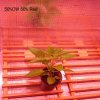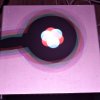PetFlora
Well-Known Member
This should simplify a DIY led project http://makersled.com/?p=396












It is infrared, near infrared is in the 700's. Heat stimulates growth during the vegetative stages. I'm assuming it's a young plant/veg cabinet. Sweet design guod!
OK.. accepted !__!^^^^^ I don't even know what to say..............absolutely floored by the level of ingenuity here......Can't rep you again
WOW!
AWESOME !!!
You're a perfectionist ..
( .....Going Inox sheet and PU foam Insulation ? ..He-he....I'm sure that has gone through your mind,already...
By the first looks I've already imagined how it would look ,made " lab style "... )
I'm speechless....
Peak between 8,8µm - 9.2µm ?
880nm to 920 nm ?
NIR for roots ?
Oh...Something tells me it may do wonders ...
Irradiation Output power ?
It is infrared, near infrared is in the 700's. Heat stimulates growth during the vegetative stages. I'm assuming it's a young plant/veg cabinet. Sweet design guod!









must be the bad 660nm... afaik.....................--------and now back to the discussion over the real right spectrum[/I] mix
